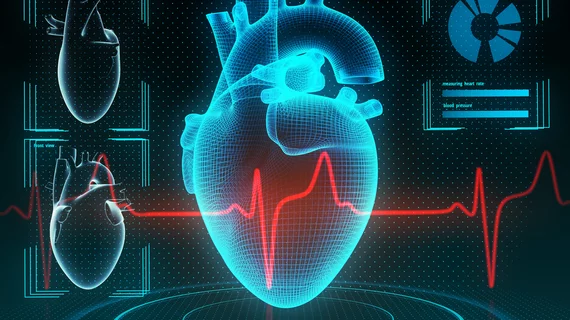Chest strap ECG effectively detects AFib
Electrocardiograms (ECG) acquired using a chest strap could be a quality alternative to traditional ECGs when used to diagnose atrial fibrillation (AF), researchers reported in the American Journal of Cardiology.
Atrial fibrillation is one of the primary culprits behind some 20 to 30 percent of ischemic strokes, first author Sanna Hartikainen, MD, of Kuopio University Hospital in Finland, and co-authors wrote in AJC, but finding the root cause of a stroke—whether it’s AF or not—remains a significant clinical challenge.
“Currently available consumer products have been studied in the feasibility and diagnosis accuracy of AF, but there is still a need for ECG strip for the confirmation of AF diagnosis,” Hartikainen and colleagues said. “On the other hand, chest strap heart rate (HR) monitors have been used for sports HR monitoring for decades and the technique is widely available.”
It’s unknown whether ECG acquired with a chest strap could be a tool for AF detection, the authors said. The current gold standard for diagnosis is a 12-lead ECG, but physicians also use pulse palpation, handheld single-lead ECG devices, modified blood pressure monitors and photoplethysmography to confirm AF.
Hartikainen et al. assessed the ability of two doctors and two automated algorithms to detect arrhythmias in 220 patients—107 with AF, 111 with sinus rhythm and two with inconclusive rhythms—who’d undergone single-channel ECG with a chest strap. A 3-lead Holter served as the control for rhythm analysis.
The team found both cardiologists evaluated the quality of the chest strap ECG as superior to that of the Holter ECG, though both methods enabled AF detection. The two AF detection algorithms achieved 95.3 percent and 96.3 percent sensitivity and 95.5 percent and 98.2 percent specificity, respectively, for the chest strap ECG and 93.5 percent and 97.2 percent sensitivity and 98.2 percent and 95.5 percent specitivity, respectively, for the Holter.
The first doctor reported P-waves in 93.7 percent of cases from the chest strap ECG and 98.2 percent of cases from the Holter; the second reported P-waves in 94.6 percent of chest strap cases and 95.5 percent of Holter cases, respectively.
“The two algorithms used detected atrial fibrillation from the Holter and chest strap ECG with good specificity and sensitivity,” Hartikainen and colleagues wrote. “There was no significant difference in algorithm rhythm classification between the chest strap ECG and the Holter ECG.”
The authors said the chest strap method could be used in asymptomatic risk group patients and in the long-term follow-up of post-stroke patients to detect AF. They said the approach should still include an ECG strip for confirmation of a diagnosis.
“After clinical validation and studies for longer measurement times and moving subjects, the chest strap with the ECG sensor could be used both in opportunistic and systematic screening for atrial fibrillation,” they wrote. “If our study technique with the use of the actual ECG acquired from the HR monitor chest strap appears to be practical and can be validated, it opens an opportunity for a low-cost screening method that is easy to implement in large populations at risk of AF and in post-stroke studies.”

